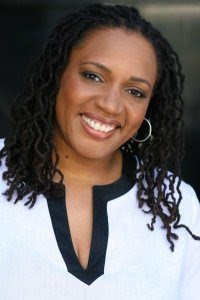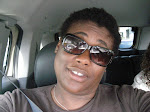
Last month I had the opportunity to attend a book release party for a new anthology, The Black Body, edited by Meri Nana-Ama Danquah. The collection of essays and poems explores the idea of what it means to have, or to love, a black body. Danquah assembled thirty black, white and biracial contributors to “take on the challenge of interpreting the black body’s dramatic role in American culture.” The book was robust and provocative and left me contemplating how the black body--specifically the black female body--takes up room in the entertainment machine we call Hollywood. Hollywood - the land of make-believe and glamour – is largely responsible for what we define as beautiful, desirable or sexy in this country.
Recently I was on Rodeo Drive and saw reality star Kim Kardashian (Keeping Up with the Kardashians) in the flesh. I’m aware that she is not black, but follow along anyway. She is the poster girl for “curvy” in these parts. What struck me first was how small she is. Small as in height; even with the six-inch heels it is clear she is barely 5’3”. But she is also small in frame; my guess is she is probably a size 4. Her infamous butt is, well, a butt. There is no denying she has junk in her trunk, but the trunk belongs to a Mini Cooper as opposed to a Ford Taurus. But she, along with a handful of other actresses, has become the anemic measuring stick that is a fraudulent example of “real” bodies in L.A.
Every month a new starlet is dubbed the “It Girl”; magazines run shiny pictorials to support the proclamation. On the rare occasions when a black actress is sprinkled with “It Girl” fairy dust (I think Halle Berry has been our token forever) there are a series of predictable adjectives that are trotted out to describe her. She is sassy, strong, serious, sexy, steely (yes, I am going for serial alliteration) and intense (that one is used for Angela Bassett). And when her body is described the word “curvy” is always on the top of the list. There is nothing wrong with being curvy, except it is the Hollywood euphemism of saying “bigger than a size 2.” In the world outside of L.A. Gabriel Union, Nia Long and Halle Berry would have ham sandwiches forced on them on a regular basis--but those actresses do not inhabit our world. For them to compete for time on the silver screen they must take on all the markers (long weaves, extreme diets, tiny bodies) of their white counterparts. They simply become tea-stained Barbie dolls.

The discussion of how women’s bodies are perceived in Hollywood is one that is age-old. But with the introduction of Gabourey “Gabby” Sidibe in the starring role of Precious, I think there is an opportunity to have a more honest dialogue and to see if Hollywood is ready to embrace a real big girl.
In 2006, Jennifer Hudson was the sassy, big It Girl. She had an extraordinary award show run that ended with a Best Supporting Actress Oscar. Every time she showed up on the red carpet, the words “curvy” and “voluptuous” weren’t too far behind. In reality the big girls in the rest of the country couldn’t help laughing. On her biggest day Jennifer Hudson was a size 16, but more likely usually a 14. What was the big deal? She didn’t look any different than the girl that lived next door.
Well, this award season is being dominated by one Gabourey Sidibe and there is no doubt, tipping the scale at 300 pounds, that she is an authentic big girl. But what is interesting is how the discussion about Gabby’s body has been framed in the context of her alter ego Precious. It’s as if they don’t share the same body. In the litany of reviews the word “obese” is flung around liberally as they describe her character, Clareece Precious Jones, but in interviews with Gabby the writers consistently remarks how “different” she is from the character she portrays in the blistering movie. The difference is her bubbly personality, her Valley Girl voice, the sense that she has somehow escaped the cruelty of adolescence. But most critics don’t take the honest next step and say what is the same: her weight. Interview after interview, she is filling out every square inch of her sized-for-her designer dress. She is taking up every square inch of the chair that is provided for her during the press junket. But no one dares speaks it. Is it because there is legitimate concern that Gabby truly is obese? That they see nothing attractive about her (which I think is absolutely not true)? Or that there is no language in the Hollywood lexicon to describe her? To say she is “curvy” or “voluptuous” (in Hollywood-speak) would be dishonest. So it is simply ignored.
And that is a shame. In many ways Gabby is breaking new ground for actresses larger than a size 22. She is the perfect example: American filmgoers are ready to pay their money to see a woman that has not been created by the Hollywood starlet machine and may not necessarily be relegated to the character parts reserved for the not-so-beautiful or skinny people. The blogosphere has been on fire regarding this very topic. Bloggers have not been shy about talking about Gabby’s weight, but the discussions have taken disturbing turns. What starts out as a critique of Precious quickly devolves into screeds on Gabby’s weight and how it somehow diminishes her credible performance. The argument is that because she started out “fat” she is not really acting. Really?
With that kind of illogical and unfair criticism I can’t help but wonder what is next for her. Will she go the way of Hattie McDaniel or will Hollywood loosen its belt and make room for a remarkable new talent that couldn’t find a size 24 dress on Rodeo Drive to save her life?


























